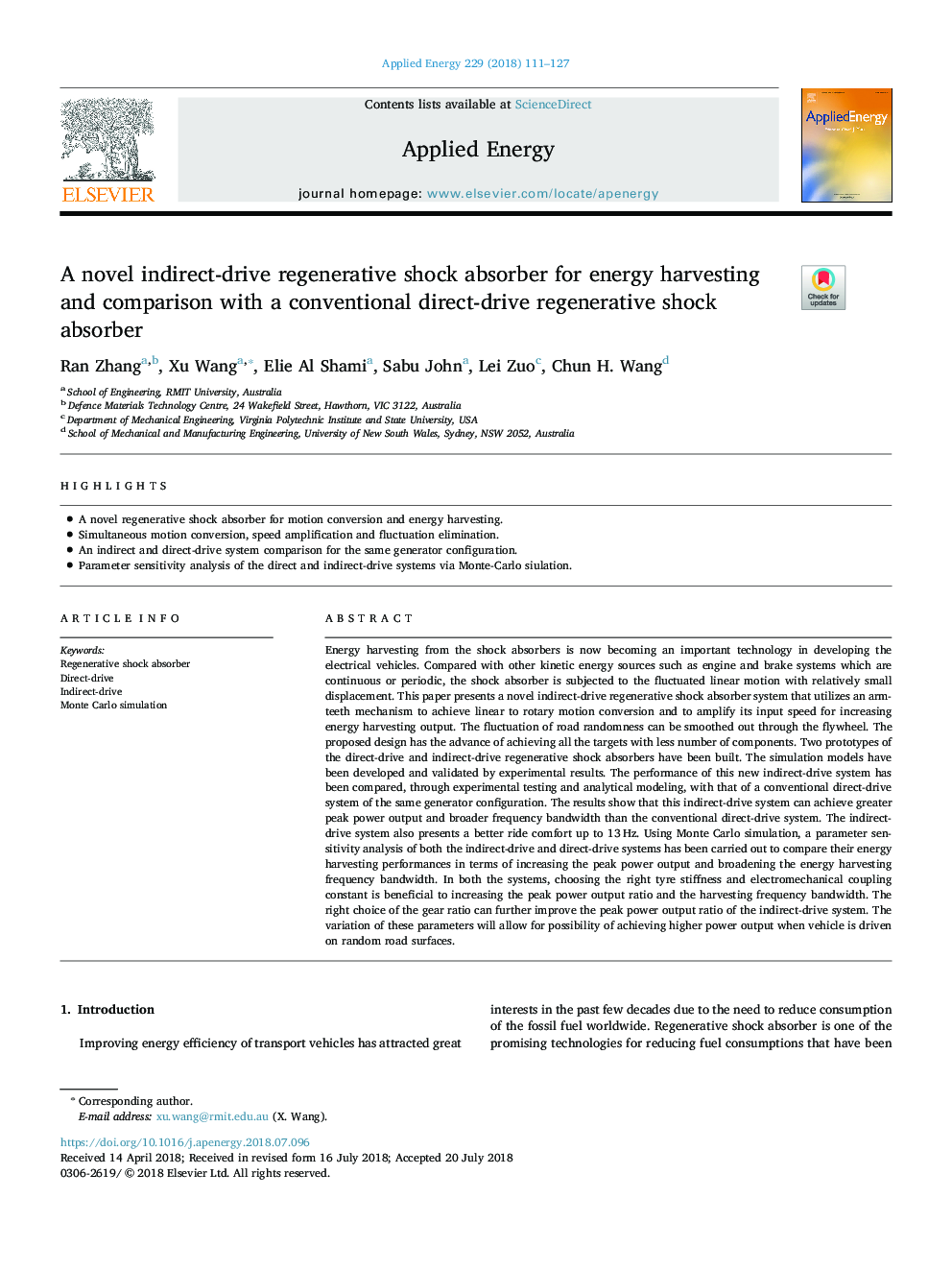| Article ID | Journal | Published Year | Pages | File Type |
|---|---|---|---|---|
| 6679638 | Applied Energy | 2018 | 17 Pages |
Abstract
Energy harvesting from the shock absorbers is now becoming an important technology in developing the electrical vehicles. Compared with other kinetic energy sources such as engine and brake systems which are continuous or periodic, the shock absorber is subjected to the fluctuated linear motion with relatively small displacement. This paper presents a novel indirect-drive regenerative shock absorber system that utilizes an arm-teeth mechanism to achieve linear to rotary motion conversion and to amplify its input speed for increasing energy harvesting output. The fluctuation of road randomness can be smoothed out through the flywheel. The proposed design has the advance of achieving all the targets with less number of components. Two prototypes of the direct-drive and indirect-drive regenerative shock absorbers have been built. The simulation models have been developed and validated by experimental results. The performance of this new indirect-drive system has been compared, through experimental testing and analytical modeling, with that of a conventional direct-drive system of the same generator configuration. The results show that this indirect-drive system can achieve greater peak power output and broader frequency bandwidth than the conventional direct-drive system. The indirect-drive system also presents a better ride comfort up to 13â¯Hz. Using Monte Carlo simulation, a parameter sensitivity analysis of both the indirect-drive and direct-drive systems has been carried out to compare their energy harvesting performances in terms of increasing the peak power output and broadening the energy harvesting frequency bandwidth. In both the systems, choosing the right tyre stiffness and electromechanical coupling constant is beneficial to increasing the peak power output ratio and the harvesting frequency bandwidth. The right choice of the gear ratio can further improve the peak power output ratio of the indirect-drive system. The variation of these parameters will allow for possibility of achieving higher power output when vehicle is driven on random road surfaces.
Keywords
Related Topics
Physical Sciences and Engineering
Energy
Energy Engineering and Power Technology
Authors
Ran Zhang, Xu Wang, Elie Al Shami, Sabu John, Lei Zuo, Chun H. Wang,
